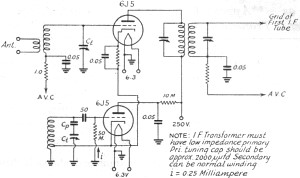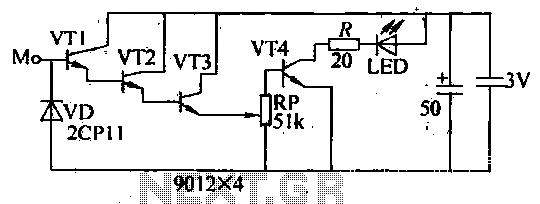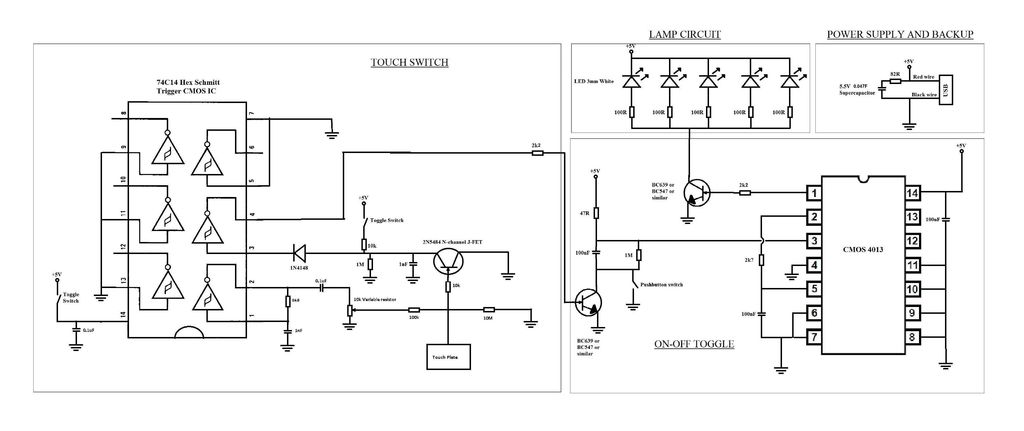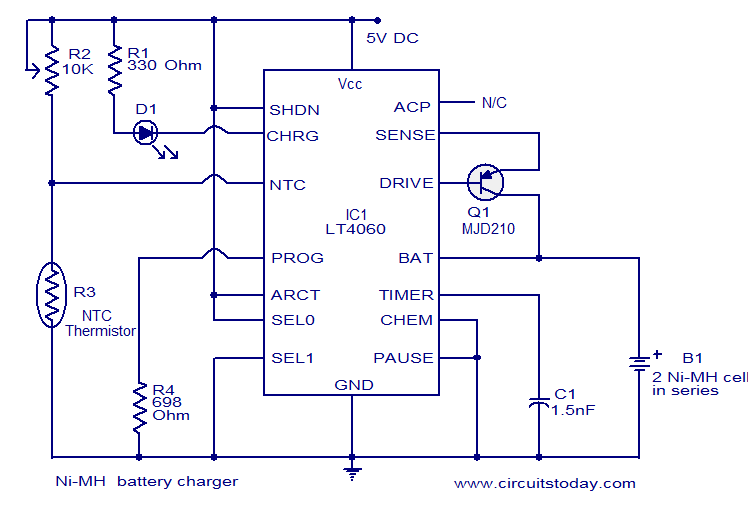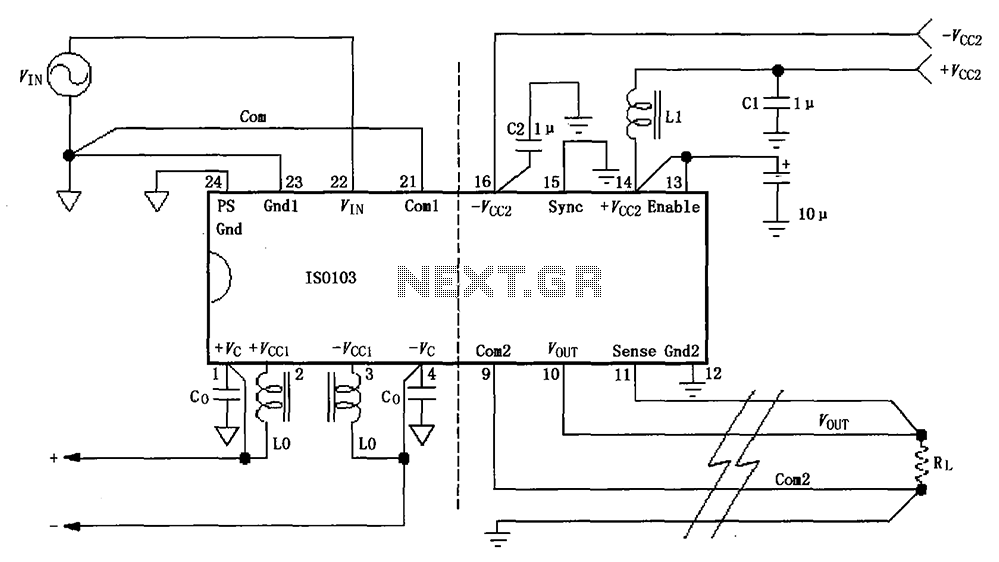
Battery Watchdog Circuit
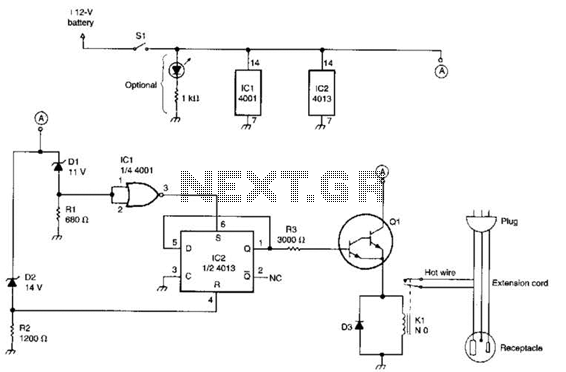
This circuit utilizes a pair of Zener diodes to monitor the voltage of a 12-V battery. When the voltage drops below 11 V, diode D1 ceases to conduct, causing pin 3 of flip-flop IC2 to go high. This action sets the flip-flop, turning on Q1, K1, and activating the battery charger. Conversely, when the battery voltage exceeds 14 V (indicating a full charge), diode D2 conducts, resetting flip-flop IC2 and disconnecting the battery charger.
The circuit operates as a battery voltage monitoring and charging control system. The Zener diodes are selected based on their breakdown voltages, with one Zener diode (D1) set to trigger at a lower threshold of 11 V and the other (D2) at an upper threshold of 14 V. This creates a hysteresis effect that prevents rapid cycling of the charger on and off, ensuring stable operation.
When the battery voltage falls below 11 V, D1 becomes reverse-biased, which results in pin 3 of flip-flop IC2 transitioning to a high state. This transition activates the output of the flip-flop, which then drives the base of transistor Q1. Q1, when turned on, allows current to flow through K1, which represents the battery charger relay or control circuit. This connection initiates the charging process, thereby restoring the battery voltage.
On the other hand, when the battery reaches a voltage above 14 V, D2 becomes forward-biased. This condition causes the reset pin of flip-flop IC2 to be activated, which in turn resets the flip-flop and deactivates Q1. The deactivation of Q1 interrupts the current flow to K1, effectively disconnecting the battery charger from the circuit. This dual Zener diode configuration provides a reliable and efficient method for maintaining the battery within a safe operating voltage range, preventing overcharging and deep discharging, which can significantly extend the life of the battery.
Overall, this circuit design exemplifies a simple yet effective approach to battery management, utilizing common electronic components to achieve critical functionality in battery-operated systems. This circuit uses a pair of Zener diodes to monitor battery voltage of a 12-V battery. If below 11 V, 1)1 ceases to conduct, pin 3 of 102 goes high, setting FF IC2 turning on Ql, Kl, and the battery charger. At excess of 14-V battery voltage (full charge), D2 conducts, resetting FF IC2, and cutting off the battery charger. 🔗 External reference
The circuit operates as a battery voltage monitoring and charging control system. The Zener diodes are selected based on their breakdown voltages, with one Zener diode (D1) set to trigger at a lower threshold of 11 V and the other (D2) at an upper threshold of 14 V. This creates a hysteresis effect that prevents rapid cycling of the charger on and off, ensuring stable operation.
When the battery voltage falls below 11 V, D1 becomes reverse-biased, which results in pin 3 of flip-flop IC2 transitioning to a high state. This transition activates the output of the flip-flop, which then drives the base of transistor Q1. Q1, when turned on, allows current to flow through K1, which represents the battery charger relay or control circuit. This connection initiates the charging process, thereby restoring the battery voltage.
On the other hand, when the battery reaches a voltage above 14 V, D2 becomes forward-biased. This condition causes the reset pin of flip-flop IC2 to be activated, which in turn resets the flip-flop and deactivates Q1. The deactivation of Q1 interrupts the current flow to K1, effectively disconnecting the battery charger from the circuit. This dual Zener diode configuration provides a reliable and efficient method for maintaining the battery within a safe operating voltage range, preventing overcharging and deep discharging, which can significantly extend the life of the battery.
Overall, this circuit design exemplifies a simple yet effective approach to battery management, utilizing common electronic components to achieve critical functionality in battery-operated systems. This circuit uses a pair of Zener diodes to monitor battery voltage of a 12-V battery. If below 11 V, 1)1 ceases to conduct, pin 3 of 102 goes high, setting FF IC2 turning on Ql, Kl, and the battery charger. At excess of 14-V battery voltage (full charge), D2 conducts, resetting FF IC2, and cutting off the battery charger. 🔗 External reference
